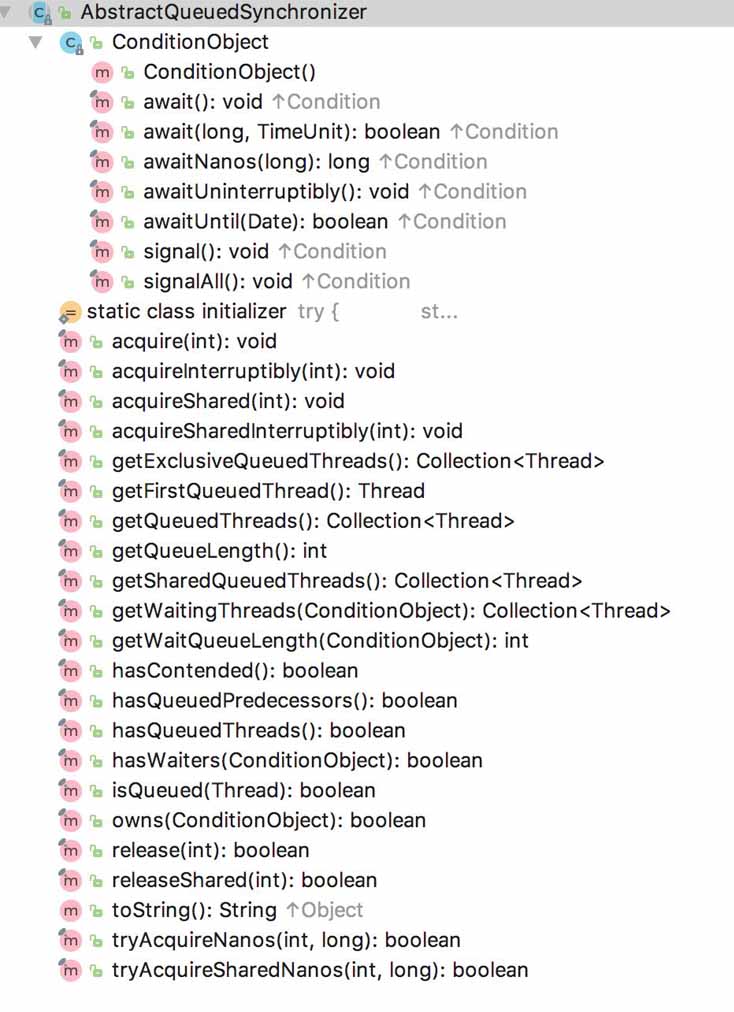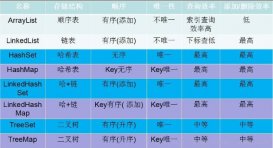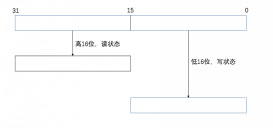AbstractQueuedSynchronizer概述
AbstractQueuedSynchronizer是java中非常重要的一个框架类,它实现了最核心的多线程同步的语义,我们只要继承AbstractQueuedSynchronizer就可以非常方便的实现我们自己的线程同步器,java中的锁Lock就是基于AbstractQueuedSynchronizer来实现的。下面首先展示了AbstractQueuedSynchronizer类提供的一些方法:

AbstractQueuedSynchronizer类方法
在类结构上,AbstractQueuedSynchronizer继承了AbstractOwnableSynchronizer,AbstractOwnableSynchronizer仅有的两个方法是提供当前独占模式的线程设置:
|
1
2
3
4
5
6
7
8
9
10
11
12
13
14
15
16
17
18
19
20
21
22
23
24
25
|
/** * The current owner of exclusive mode synchronization. */private transient Thread exclusiveOwnerThread;/** * Sets the thread that currently owns exclusive access. * A {@code null} argument indicates that no thread owns access. * This method does not otherwise impose any synchronization or * {@code volatile} field accesses. * @param thread the owner thread */protected final void setExclusiveOwnerThread(Thread thread) { exclusiveOwnerThread = thread;}/** * Returns the thread last set by {@code setExclusiveOwnerThread}, * or {@code null} if never set. This method does not otherwise * impose any synchronization or {@code volatile} field accesses. * @return the owner thread */protected final Thread getExclusiveOwnerThread() { return exclusiveOwnerThread;} |
exclusiveOwnerThread代表的是当前获得同步的线程,因为是独占模式,在exclusiveOwnerThread持有同步的过程中其他的线程的任何同步获取请求将不能得到满足。
至此,需要说明的是,AbstractQueuedSynchronizer不仅支持独占模式下的同步实现,还支持共享模式下的同步实现。在java的锁的实现上就有共享锁和独占锁的区别,而这些实现都是基于AbstractQueuedSynchronizer对于共享同步和独占同步的支持。从上面展示的AbstractQueuedSynchronizer提供的方法中,我们可以发现AbstractQueuedSynchronizer的API大概分为三类:
- 类似acquire(int)的一类是最基本的一类,不可中断
- 类似acquireInterruptibly(int)的一类可以被中断
- 类似tryAcquireNanos(int, long)的一类不仅可以被中断,而且可以设置阻塞时间
上面的三种类型的API分为独占和共享两套,我们可以根据我们的需求来使用合适的API来做多线程同步。
下面是一个继承AbstractQueuedSynchronizer来实现自己的同步器的一个示例:
|
1
2
3
4
5
6
7
8
9
10
11
12
13
14
15
16
17
18
19
20
21
22
23
24
25
26
27
28
29
30
31
32
33
34
35
36
37
38
39
40
41
42
43
44
45
46
47
48
49
50
51
52
53
54
55
56
|
class Mutex implements Lock, java.io.Serializable { // Our internal helper class private static class Sync extends AbstractQueuedSynchronizer { // Reports whether in locked state protected boolean isHeldExclusively() { return getState() == 1; } // Acquires the lock if state is zero public boolean tryAcquire(int acquires) { assert acquires == 1; // Otherwise unused if (compareAndSetState(0, 1)) { setExclusiveOwnerThread(Thread.currentThread()); return true; } return false; } // Releases the lock by setting state to zero protected boolean tryRelease(int releases) { assert releases == 1; // Otherwise unused if (getState() == 0) throw new IllegalMonitorStateException(); setExclusiveOwnerThread(null); setState(0); return true; } // Provides a Condition Condition newCondition() { return new ConditionObject(); } // Deserializes properly private void readObject(ObjectInputStream s) throws IOException, ClassNotFoundException { s.defaultReadObject(); setState(0); // reset to unlocked state } } // The sync object does all the hard work. We just forward to it. private final Sync sync = new Sync(); public void lock() { sync.acquire(1); } public boolean tryLock() { return sync.tryAcquire(1); } public void unlock() { sync.release(1); } public Condition newCondition() { return sync.newCondition(); } public boolean isLocked() { return sync.isHeldExclusively(); } public boolean hasQueuedThreads() { return sync.hasQueuedThreads(); } public void lockInterruptibly() throws InterruptedException { sync.acquireInterruptibly(1); } public boolean tryLock(long timeout, TimeUnit unit) throws InterruptedException { return sync.tryAcquireNanos(1, unit.toNanos(timeout)); } }} |
Mutex实现的功能是:使用0来代表可以获得同步变量,使用1来代表需要等待同步变量被释放再获取,这是一个简单的独占锁实现,任何时刻只会有一个线程获得锁,其他请求获取锁的线程都会阻塞等待直到锁被释放,等待的线程将再次竞争来获得锁。Mutex给了我们很好的范例,我们要实现自己的线程同步器,那么就继承AbstractQueuedSynchronizer实现其三个抽象方法,然后使用该实现类来做lock和unlock的操作,可以发现,AbstractQueuedSynchronizer框架为我们铺平了道路,我们只需要做一点点改变就可以实现高效安全的线程同步去,下文中将分析AbstractQueuedSynchronizer是如何为我么提供如此强大得同步能力的。
AbstractQueuedSynchronizer实现细节
独占模式
AbstractQueuedSynchronizer使用一个volatile类型的int来作为同步变量,任何想要获得锁的线程都需要来竞争该变量,获得锁的线程可以继续业务流程的执行,而没有获得锁的线程会被放到一个FIFO的队列中去,等待再次竞争同步变量来获得锁。AbstractQueuedSynchronizer为每个没有获得锁的线程封装成一个Node再放到队列中去,下面先来分析一下Node这个数据结构:
|
1
2
3
4
5
6
7
8
9
10
11
|
/** waitStatus value to indicate thread has cancelled */static final int CANCELLED = 1;/** waitStatus value to indicate successor's thread needs unparking */static final int SIGNAL = -1;/** waitStatus value to indicate thread is waiting on condition */static final int CONDITION = -2;/** * waitStatus value to indicate the next acquireShared should * unconditionally propagate */static final int PROPAGATE = -3; |
上面展示的是Node定义的四个状态,需要注意的是只有一个状态是大于0的,也就是CANCELLED,也就是被取消了,不需要为此线程协调同步变量的竞争了。其他几个的意义见注释。上一小节说到,AbstractQueuedSynchronizer提供独占式和共享式两种模式,AbstractQueuedSynchronizer使用下面的两个变量来标志是共享还是独占模式:
|
1
2
3
4
|
/** Marker to indicate a node is waiting in shared mode */static final Node SHARED = new Node();/** Marker to indicate a node is waiting in exclusive mode */static final Node EXCLUSIVE = null; |
有趣的是,Node使用了一个变量nextWaiter来代表两种含义,当在独占模式下,nextWaiter表示下一个等在ConditionObject上的Node,在共享模式下就是SHARED,因为对于任何一个同步器来说,都不可能同时实现共享和独占两种模式的,更为专业的解释为:
|
1
2
3
4
5
6
7
8
9
10
11
|
/** * Link to next node waiting on condition, or the special * value SHARED. Because condition queues are accessed only * when holding in exclusive mode, we just need a simple * linked queue to hold nodes while they are waiting on * conditions. They are then transferred to the queue to * re-acquire. And because conditions can only be exclusive, * we save a field by using special value to indicate shared * mode. */Node nextWaiter; |
AbstractQueuedSynchronizer使用双向链表来管理请求同步的Node,保存了链表的head和tail,新的Node将会被插到链表的尾端,而链表的head总是代表着获得锁的线程,链表头的线程释放了锁之后会通知后面的线程来竞争共享变量。下面分析一下AbstractQueuedSynchronizer是如何实现独占模式下的acquire和release的。
首先,使用方法acquire(int)可以竞争同步变量,下面是调用链路:
|
1
2
3
4
5
6
7
8
9
10
11
12
13
14
15
16
17
18
19
20
21
22
23
24
25
26
27
28
29
30
31
32
33
34
35
36
37
38
39
40
41
42
|
public final void acquire(int arg) { if (!tryAcquire(arg) && acquireQueued(addWaiter(Node.EXCLUSIVE), arg)) selfInterrupt();}private Node addWaiter(Node mode) { Node node = new Node(Thread.currentThread(), mode); // Try the fast path of enq; backup to full enq on failure Node pred = tail; if (pred != null) { node.prev = pred; if (compareAndSetTail(pred, node)) { pred.next = node; return node; } } enq(node); return node;}final boolean acquireQueued(final Node node, int arg) { boolean failed = true; try { boolean interrupted = false; for (;;) { final Node p = node.predecessor(); if (p == head && tryAcquire(arg)) { setHead(node); p.next = null; // help GC failed = false; return interrupted; } if (shouldParkAfterFailedAcquire(p, node) && parkAndCheckInterrupt()) interrupted = true; } } finally { if (failed) cancelAcquire(node); }} |
首先会调用方法tryAcquire来尝试获的锁,而tryAcquire这个方法是需要子类来实现的,子类的实现无非就是通过compareAndSetState、getState、setState三个方法来操作同步变量state,子类的方法实现需要根据各自的需求场景来实现。继续分析上面的acquire流程,如果tryAcquire返回true了,也就是成功改变了state的值了,也就是获得了同步锁了,那么就可以退出了。如果返回false,说明有其他的线程获得锁了,这个时候AbstractQueuedSynchronizer会使用addWaiter将当前线程添加到等待队列的尾部等待再次竞争。需要注意的是将当前线程标记为了独占模式。然后重头戏来了,方法acquireQueued使得新添加的Node在一个for死循环中不断的轮询,也就是自旋,acquireQueued方法退出的条件是:
- 该节点的前驱节点是头结点,头结点代表的是获得锁的节点,只有它释放了state其他线程才能获得这个变量的所有权
- 在条件1的前提下,方法tryAcquire返回true,也就是可以获得同步资源state
满足上面两个条件之后,这个Node就会获得锁,根据AbstractQueuedSynchronizer的规定,获得锁的Node必须是链表的头结点,所以,需要将当前节点设定为头结点。那如果不符合上面两个条件的Node会怎么样呢?看for循环里面的第二个分支,首先是shouldParkAfterFailedAcquire方法,看名字应该是说判断是否应该park当前该线程,然后是方法parkAndCheckInterrupt,这个方法是在shouldParkAfterFailedAcquire返回true的前提之下才会之下,意思就是首先判断一下是否需要park该Node,如果需要,那么就park它。关于线程的park和unpark,AbstractQueuedSynchronizer使用了偏向底层的技术来实现,在此先不做分析。现在来分析一下再什么情况下Node会被park(block):
|
1
2
3
4
5
6
7
8
9
10
11
12
13
14
15
16
17
18
19
20
21
22
23
24
25
26
27
|
private static boolean shouldParkAfterFailedAcquire(Node pred, Node node) { int ws = pred.waitStatus; if (ws == Node.SIGNAL) /* * This node has already set status asking a release * to signal it, so it can safely park. */ return true; if (ws > 0) { /* * Predecessor was cancelled. Skip over predecessors and * indicate retry. */ do { node.prev = pred = pred.prev; } while (pred.waitStatus > 0); pred.next = node; } else { /* * waitStatus must be 0 or PROPAGATE. Indicate that we * need a signal, but don't park yet. Caller will need to * retry to make sure it cannot acquire before parking. */ compareAndSetWaitStatus(pred, ws, Node.SIGNAL); } return false;} |
可以发现,只有当Node的前驱节点的状态为Node.SIGNAL的时候才会返回true,也就是说,只有当前驱节点的状态变为了Node.SIGNAL,才会去通知当前节点,所以如果前驱节点是Node.SIGNAL的,那么当前节点就可以放心的park就好了,前驱节点在完成工作之后在释放资源的时候会unpark它的后继节点。下面看一下release的过程:
|
1
2
3
4
5
6
7
8
9
10
11
12
13
14
15
16
17
18
19
20
21
22
23
24
25
26
27
28
29
30
31
32
33
34
35
36
|
public final boolean release(int arg) { if (tryRelease(arg)) { Node h = head; if (h != null && h.waitStatus != 0) unparkSuccessor(h); return true; } return false;}private void unparkSuccessor(Node node) { /* * If status is negative (i.e., possibly needing signal) try * to clear in anticipation of signalling. It is OK if this * fails or if status is changed by waiting thread. */ int ws = node.waitStatus; if (ws < 0) compareAndSetWaitStatus(node, ws, 0); /* * Thread to unpark is held in successor, which is normally * just the next node. But if cancelled or apparently null, * traverse backwards from tail to find the actual * non-cancelled successor. */ Node s = node.next; if (s == null || s.waitStatus > 0) { s = null; for (Node t = tail; t != null && t != node; t = t.prev) if (t.waitStatus <= 0) s = t; } if (s != null) LockSupport.unpark(s.thread);} |
首先通过tryRelease方法来保证资源安全完整的释放了之后,如果发现节点的状态小于0,会变为0。0代表的是初始化的状态,当前的线程已经完成了工作,释放了锁,就要恢复原来的样子。然后会获取该节点的后继节点,如果没有后续节点了,或者后继节点已经被取消了,那么从尾部开始向前找第一个符合要求的节点,然后unpark它。
上面介绍了一对acquire-release,如果希望线程可以在竞争的时候被中断,可以使用acquireInterruptibly。如果希望加上获取锁的时间限制,可以使用tryAcquireNanos(int, long)方法来获取。
共享模式
和独占模式一样,分析一下acquireShared的过程:
|
1
2
3
4
5
6
7
8
9
10
11
12
13
14
15
16
17
18
19
20
21
22
23
24
25
26
27
28
29
30
31
32
|
public final void acquireShared(int arg) { if (tryAcquireShared(arg) < 0) doAcquireShared(arg);}private void doAcquireShared(int arg) { final Node node = addWaiter(Node.SHARED); boolean failed = true; try { boolean interrupted = false; for (;;) { final Node p = node.predecessor(); if (p == head) { int r = tryAcquireShared(arg); if (r >= 0) { setHeadAndPropagate(node, r); p.next = null; // help GC if (interrupted) selfInterrupt(); failed = false; return; } } if (shouldParkAfterFailedAcquire(p, node) && parkAndCheckInterrupt()) interrupted = true; } } finally { if (failed) cancelAcquire(node); }} |
获取锁的流程如下:
- 尝试使用tryAcquireShared方法,如果返回值大于等于0则表示成功,否则运行doAcquireShared方法
- 将当前竞争同步的线程添加到链表尾部,然后自旋
- 获取前驱节点,如果前驱节点是头节点,也就是说前驱节点现在持有锁,那么继续运行4,否则park该节点等待被unpark
- 使用tryAcquireShared方法来竞争,如果返回值大于等于0,那么就算是获取成功了,否则继续自旋尝试
共享模式下的release流程:
|
1
2
3
4
5
6
7
8
9
10
11
12
13
14
15
16
17
18
19
20
21
22
23
24
25
26
27
28
29
30
31
32
33
34
35
36
37
38
39
40
41
42
|
public final boolean releaseShared(int arg) { if (tryReleaseShared(arg)) { doReleaseShared(); return true; } return false;}private void doReleaseShared() { for (;;) { Node h = head; if (h != null && h != tail) { int ws = h.waitStatus; if (ws == Node.SIGNAL) { if (!compareAndSetWaitStatus(h, Node.SIGNAL, 0)) continue; // loop to recheck cases unparkSuccessor(h); } else if (ws == 0 && !compareAndSetWaitStatus(h, 0, Node.PROPAGATE)) continue; // loop on failed CAS } if (h == head) // loop if head changed break; }} private void unparkSuccessor(Node node) { int ws = node.waitStatus; if (ws < 0) compareAndSetWaitStatus(node, ws, 0); Node s = node.next; if (s == null || s.waitStatus > 0) { s = null; for (Node t = tail; t != null && t != node; t = t.prev) if (t.waitStatus <= 0) s = t; } if (s != null) LockSupport.unpark(s.thread);} |
首先尝试使用tryReleaseShared方法来释放资源,如果释放失败,则返回false,如果释放成功了,那么继续执行doReleaseShared方法唤醒后续节点来竞争资源。需要注意的是,共享模式和独占模式的区别在于,独占模式只允许一个线程获得资源,而共享模式允许多个线程获得资源。所以在独占模式下只有当tryAcquire返回true的时候我们才能确定获得资源了,而在共享模式下,只要tryAcquireShared返回值大于等于0就可以说明获得资源了,所以你要确保你需要实现的需求和AbstractQueuedSynchronizer希望的是一致的。
桶独占模式一样,共享模式也有其他的两种API:
- acquireSharedInterruptibly:支持相应中断的资源竞争
- tryAcquireSharedNanos:可以设定时间的资源竞争
本文大概描述了AbstractQueuedSynchronizer框架的一些基本情况,具体的细节没有深究,但是AbstractQueuedSynchronizer作为Java中锁实现的底层支撑,需要好好研究一下,后续会基于AbstractQueuedSynchronizer来分析java中各种锁的实现。
以上就是本文的全部内容,希望对大家的学习有所帮助,也希望大家多多支持服务器之家。
原文链接:http://www.jianshu.com/p/853b203a8d93















